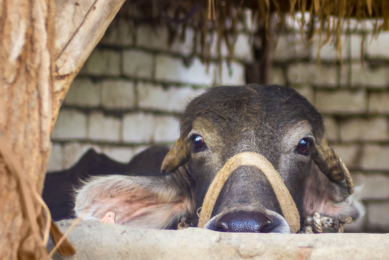Global wheat market is changing

The global wheat trade is changing. The Black Sea region countries are getting stronger on the world market. This is according to Rabobank analysts.
The report: The brass tacks of the Black Sea wheat challenge, published by agrifood bank Rabobank states that global wheat production will reach a new record volume in 2017/18. A large part is due to the growth of production in the Black Sea region countries (BSR). Since the early 2000s already, BSR wheat has grown – from comprising less than 10% to making up 25% of global grain markets – and has been a significant contributor to the world being awash with wheat over the years. Main wheat producing countries in BSR are Russia, Ukraine and Kazakhstan.
Drivers of competitiveness
According to data from Rabobank, the world now has more wheat, moving further and to different markets. The launch of the new Black Sea wheat futures, the closure of the US wheat industry trade office in Cairo in 2017, and the lowest US planted area of wheat in 100 years are just a couple of developments that reflect the changed dynamics in global wheat trade. Australia has lost market share in some of its major and traditional markets and has been challenged on price from both BSR wheat and from North American wheat.
Drivers of competitiveness of BSR wheat on global market:
- Low freight rates
- Currency depreciations
- Yield and supply growth
- Investment in farming and the export supply chain
- Run of good seasons
- Government policies (to a lesser degree)
Ukraine and Russia: main drivers
The Black Sea countries are strategically located to the Middle East and North Africa, and to forecast growth areas in Sub-Saharan Africa. Ukraine (36%), Russia (30%) and Kazakhstan (5%) account for 70% of the BSR’s annual grain and oilseed exports. Romania, Bulgaria, Hungary and Serbia make up the remaining 30% of exports. Ukraine’s annual wheat production averages 23m tonnes, between 2012/13 and 2016/17. Production has grown at a CAGR of 7% over the last decade. Average wheat yields in Ukraine have grown, from around 2 tonnes/ha to just over 4 tonnes/ha since the early 2000s. Wheat production is dominated by winter wheat varieties, which are harvested from late June to August. For Russia, wheat is far and away the largest production crop. Russia’s average annual production has grown at CAGR of 9% over the last decade. The majority of wheat in Russia is spring wheat, harvested in August and September. Costs of production of wheat are AUD 121/tonne in Russia, AUD 133/tonne in Ukraine (compared to AUD216/tonne in Australia).
More feed wheat to South East Asia
Rabobank forecasts total Black Sea wheat exports to increase by between 18% and 45% by 2030/31/ Critical to this will be the upgrade and development of supply chain infrastructure ports and inland freight. Export capacity growth will be required, with new investments, expansion of current capacity, and efficiency improvements all avenues for achieving growth. In Ukraine, this is primarily required at inland rivers ports, while in Russia, there is a missing gap in both inland and port infrastructure. At the same time, drivers for further exports are there, as South East Asia is demanding more wheat in the near future. However, growth in demand for feed grain and affordable mass-produced baked goods favours affordable BSR origin wheat, while growth in biscuits and noodle demand favours Australian origin wheat
Source: Rabobank











